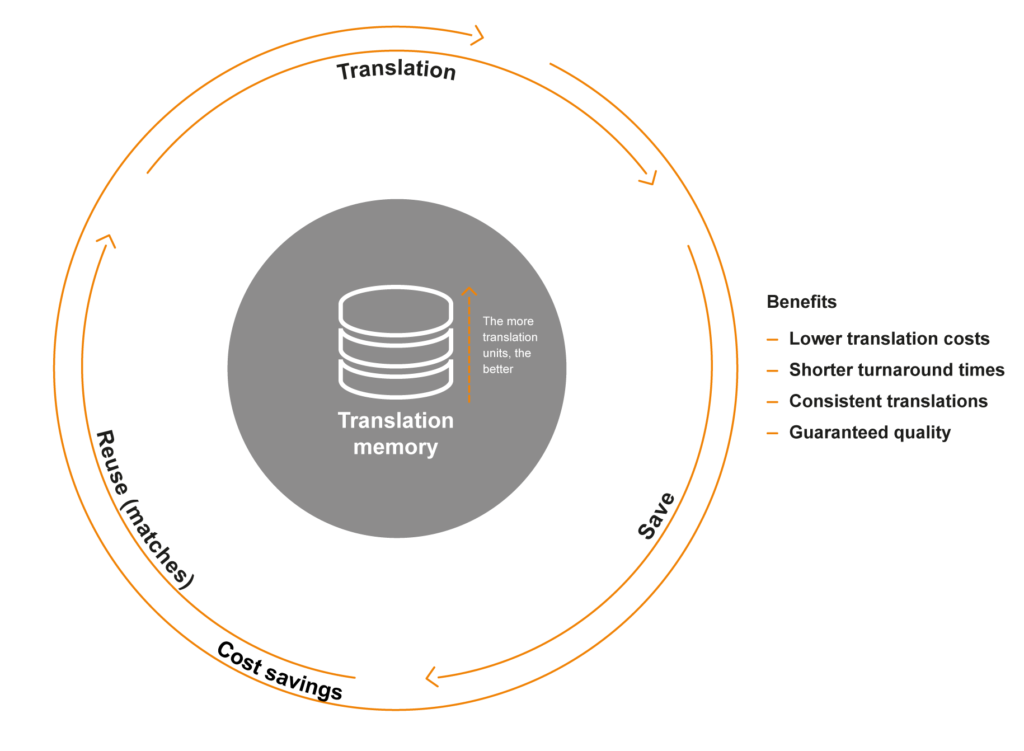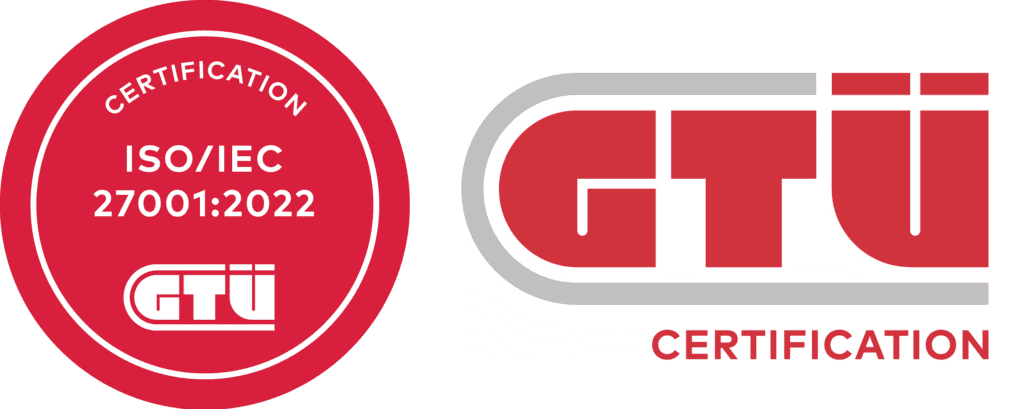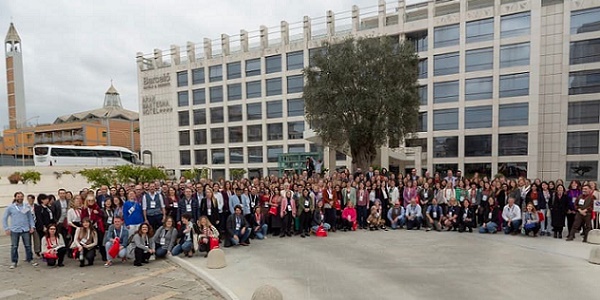A translation memory never forgets
The translation memory, or TM, is the key element of any CAT software. A translation memory is a database containing every sentence or segment of text ever translated using the CAT tool, helping translators work more efficiently and consistently.
How a translation memory works
Every sentence we translate is saved in the translation memory. If similar sentences appear in future translations (even years later), the translation memory displays the saved translations with a percentage value indicating how similar the saved sentence is to the current one. The translator can then decide to use the previous translation, adapt it, or disregard it if it is not suitable for the current text.
This not only saves time, but is also very important from a terminological point of view, as it means standard sentences are always translated in the same way, and wording that a client no longer uses can simply be deleted or edited. Translation memories can also provide the translator with valuable contextual information, and they are used in various different CAT tools.
Translation memories save money
Every translation we do for you is saved in your translation memory. If similar or identical segments come up in a subsequent translation, the TM will display a match based on the previously translated text. This saves us time – and saves you money.
Context matches
These are 100% matches between the TM and the new segment. The segments also have the same context.
Perfect matches
A type of context match where the text to be translated is compared with a previous bilingual document instead of the TM.
Fuzzy matches
In this case, the target text segment and TM segment will display a match of 75% to 99%. The segments will still be relatively similar.

How do we ensure consistency?
Obviously not everything can be found in the translation memories. While there may be numerous examples of the terminology you use and your wording and punctuation preferences, we record this type of information in your style guide and MultiTerm database to ensure absolute consistency across all texts (and for editing and proofreading projects).
Style guides
This is where we record the correct form for dates, whether headlines take a full stop or not, and if “www.” should be added to URLs in continuous text. Our style guides also include company slogans, standard phrases or legal notices. As our client, you can either send this information to us in advance, or our editors and translators will make a note of your preferences based on the texts they work on for you. The aim of all the above is to standardise your corporate language. We want to ensure your texts are written exactly as you want them to be, without you constantly having to remind us of how you do things.
MultiTerm
MultiTerm is a terminology database that essentially functions as an electronic dictionary. We use it to save your preferred terminology and corporate language, and any words or phrases that should not be used in your texts, so that our translators and proofreaders always have the most up-to-date information on your wording, tone and style. MultiTerm also functions as a knowledge database and can provide additional information about a particular term, such as example sentences and even images. We use the current version of MultiTerm (2019).
We would also be delighted to help you develop a corporate language and wording that work for your company, and record these in our databases.
![[Name Nachname]](https://www.diction.ch/app/uploads/2020/05/Team_Content_BrunoCiola_200520.jpg)
Do you have any questions about translation memories?
Our team of translation-memory experts, headed up by Bruno Ciola, are on hand to answer any questions you may have.
+41 81 750 53 33
languagetechnology@diction.ch
News

Secure? For sure! Diction is ISO 27001 certified
ISO alert at Diction! We are now ISO 27001 certified. Of course, data protection and information…

Exciting encounters at ELIA Together 2023 in Rome
Our language partners are part of our family! That’s why we couldn’t miss the opportunity…

Save time and money with SERI-compliant translations
Do you need to translate or proofread education-related documents that have to adhere to the…